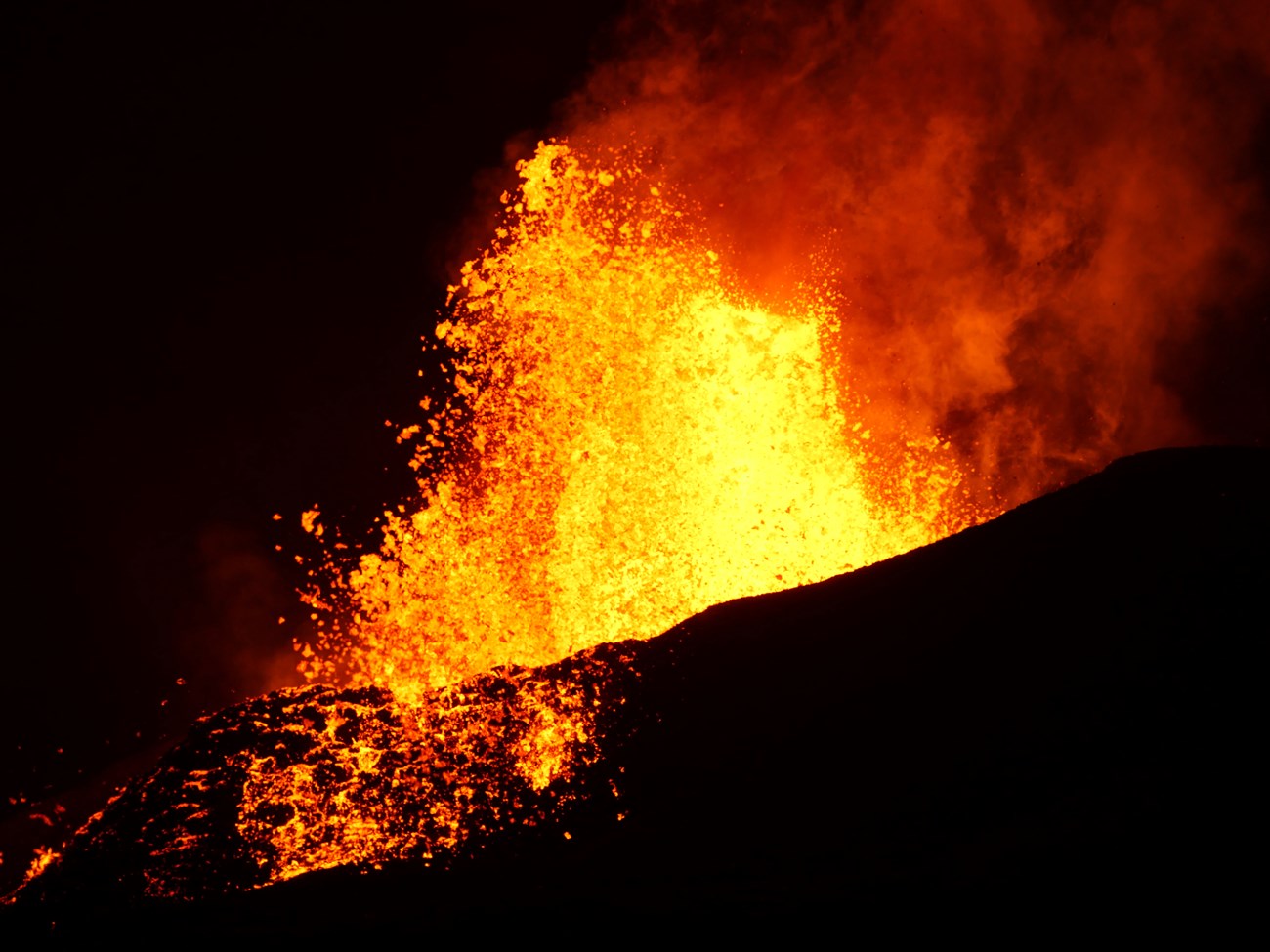Part of a series of articles titled Volcanic Eruption Types.
Article
Magmatic Eruptions

USGS Photo.
Introduction
Magmatic eruptions that include the ejection of lava or tephra from a magma source within the earth. There is a significant range in the intensity, magnitude, explosivity, eruption rate, and amount of magma erupted.
Magmatic eruptions are generally described as being effusive or explosive.
-
Effusive eruptions are dominated by passive emission of lava.
-
Explosive eruptions are dominated by eruption of fragmental (pyroclastic) material.

NPS illustration by Fierstein, 2012.
Eruptions of basaltic lavas (e.g., lavas that have low viscosity) such as at Hawaii Volcanoes National Park usually are effusive to only moderately explosive. Eruptions of high viscosity rhyolitic lavas can be extremely explosive, especially when volatile content is high. The 1912 eruption of Novarupta that created the Valley of 10,000 Smokes in Katmai National Park and Preserve was extremely explosive. It was the largest volcanic eruption of the twentieth century.
Related Links
-
Hawaii Volcanoes National Park (HAVO), Hawaii—[HAVO Geodiversity Atlas] [HAVO Park Home] [HAVO Eruptions] [HAVO npshistory.com]
-
Katmai National Park and Preserve (KATM), Alaska—[KATM Geodiversity Atlas] [KATM Park Home] [KATM Volcanoes] [KATM npshistory.com]
-
USGS Alaska Volcano Observatory—Novarupta (in Katmai National Park and Preserve)
Tags
- aniakchak national monument & preserve
- crater lake national park
- el malpais national monument
- grand canyon national park
- grand canyon-parashant national monument
- haleakalā national park
- hawaiʻi volcanoes national park
- katmai national park & preserve
- lake clark national park & preserve
- lassen volcanic national park
- mount rainier national park
- sunset crater volcano national monument
- volcanic eruption types
- eruptions
- volcanoes
- geology
Last updated: April 14, 2023
